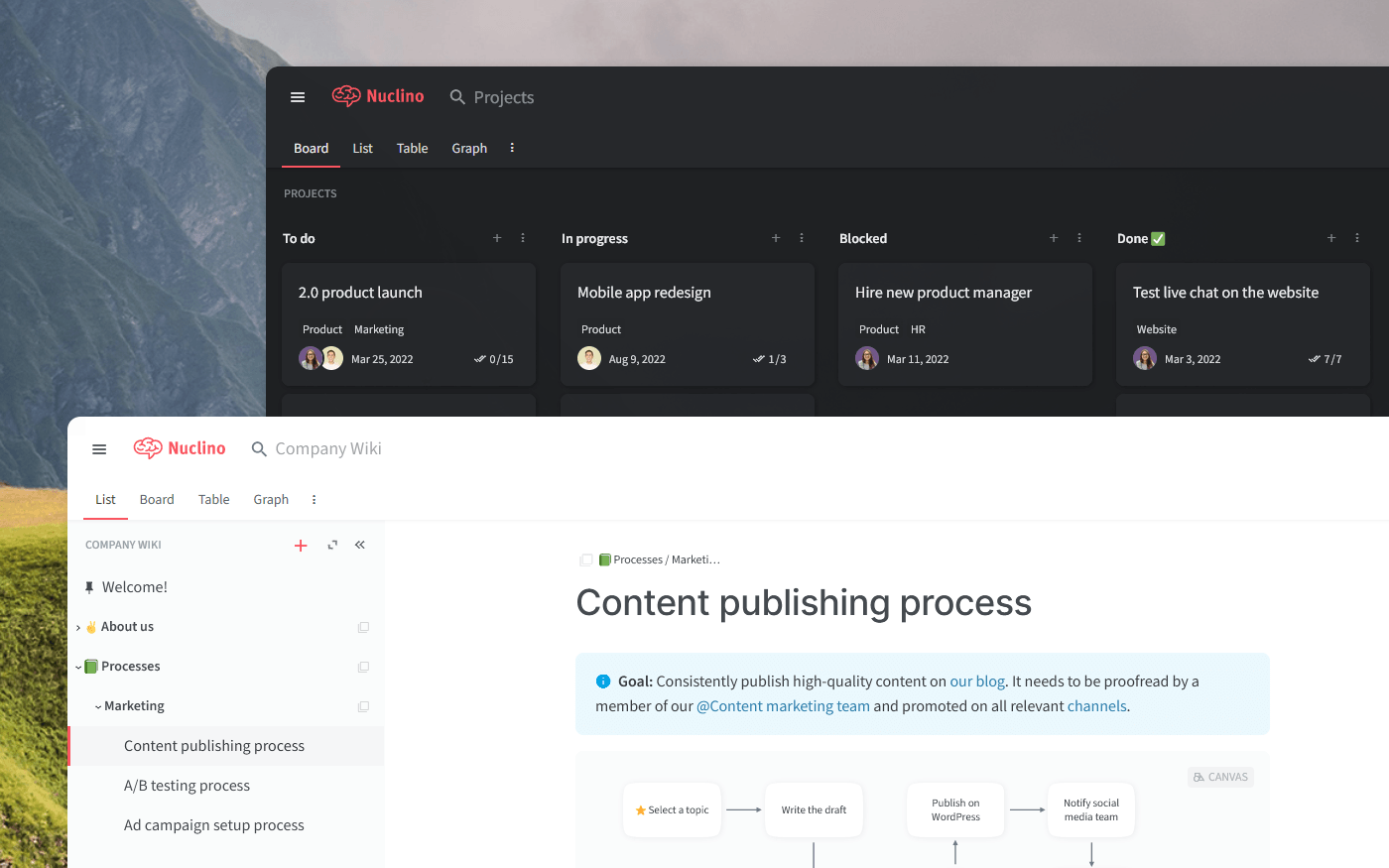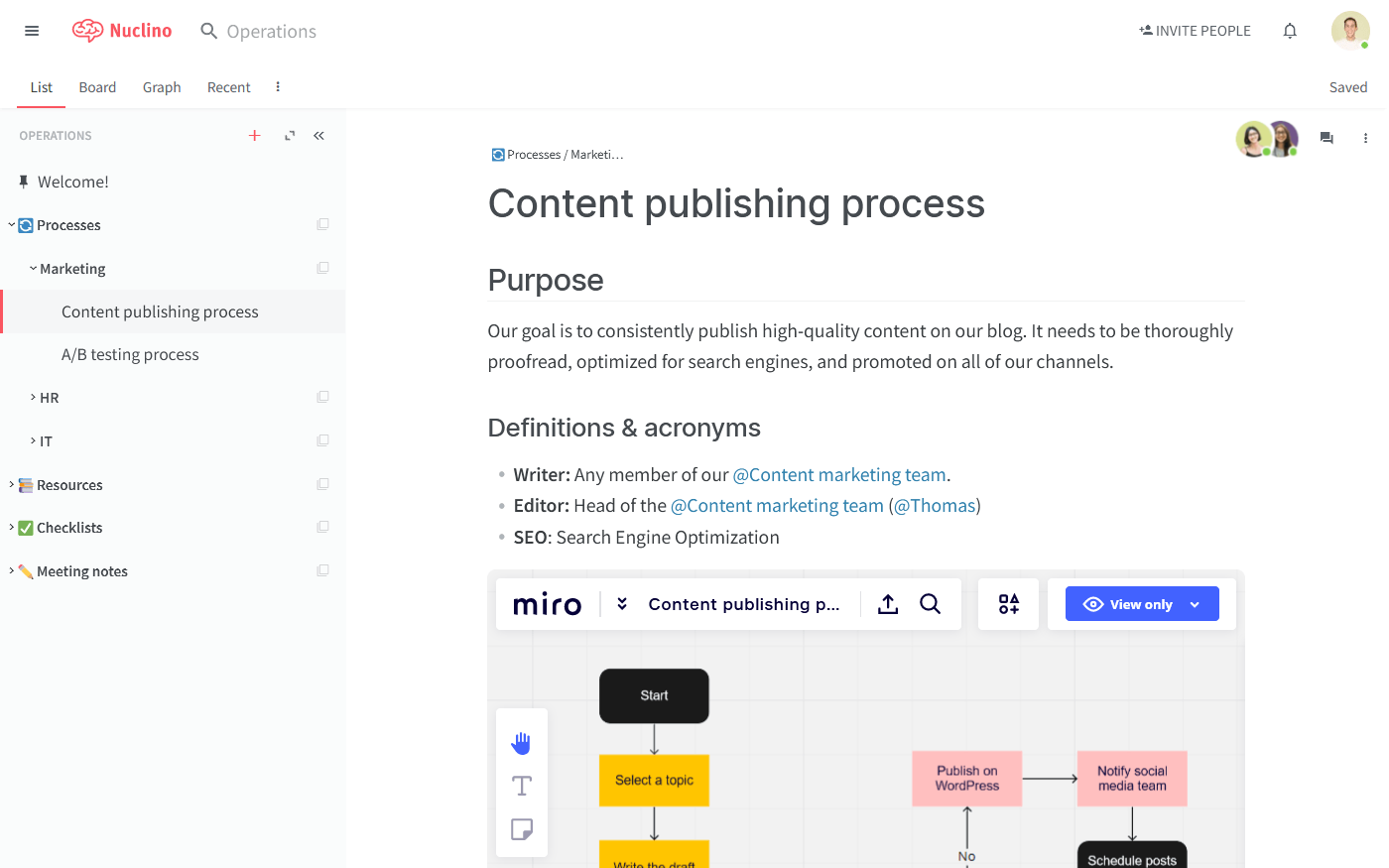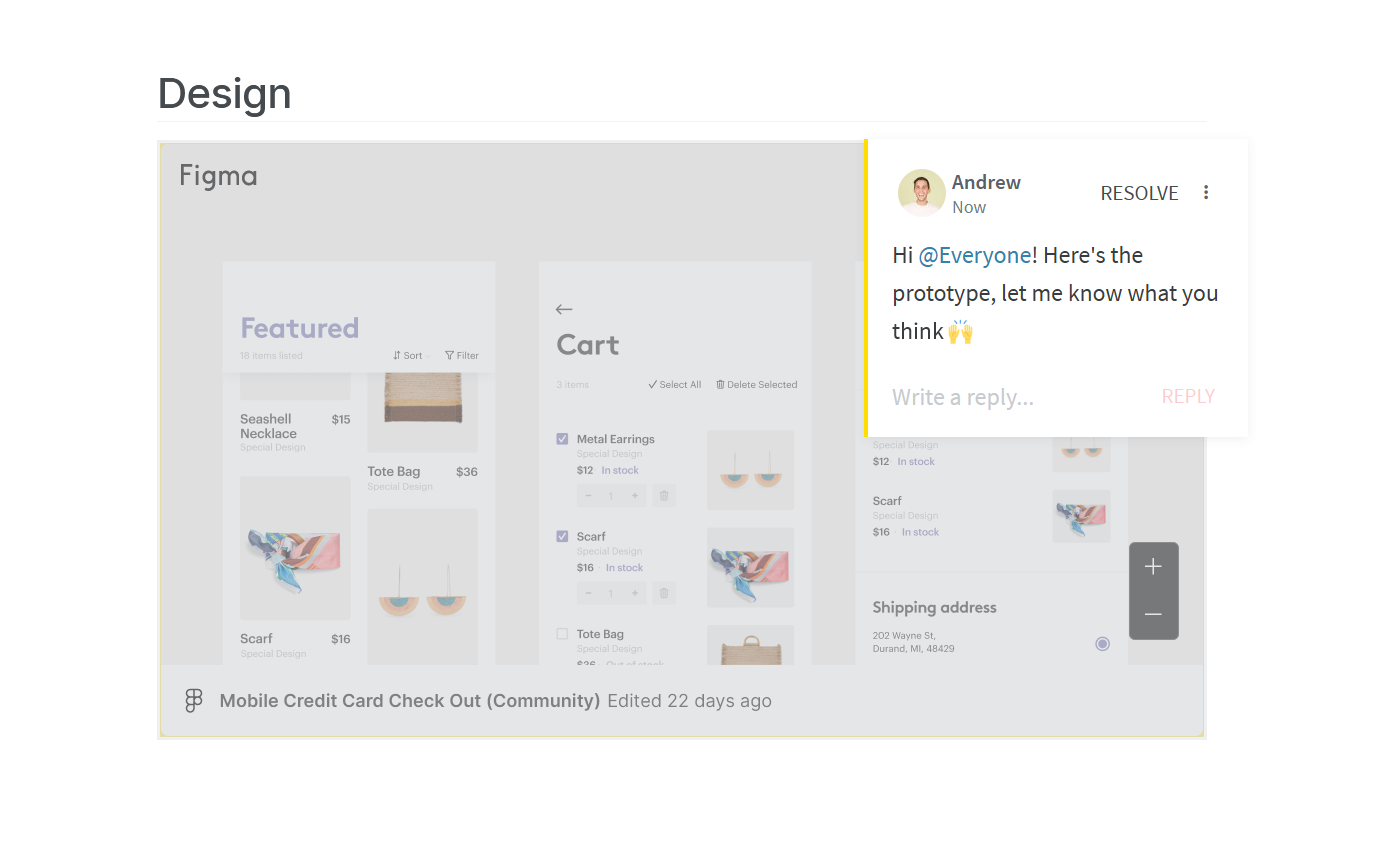SharePoint vs OneNote
Learn more about your options and pick the best tool for your team.
Unsure whether to choose SharePoint or OneNote for your team? You've come to the right place.
If you are evaluating document sharing tools and business collaboration platforms, SharePoint and OneNote will likely make it to your shortlist. Launched by Microsoft in 2001 and 2003 respectively, these two tools have been on the market for decades and have hundreds of thousands of loyal customers.
In this article, we will take a closer look at both SharePoint and OneNote and examine their strengths and weaknesses to help you make the right decision for your company.
SharePoint and OneNote compared
Both OneNote and SharePoint are available as part of the Microsoft Office (now called Microsoft 365) suite. There is a certain overlap in their functionalities, especially in terms of note-taking and document storage, which might lead to some confusion when deciding which tool to use for specific tasks.
There is no one-size-fits-all solution, and depending on what you want to achieve, one of them may match your needs much better than the other. And if you're having trouble choosing between OneNote and SharePoint, keep in mind that they aren't your only options. There are many other excellent tools that may turn out to be an even better fit for you.

To make the most informed decision, let's first dive deeper into what SharePoint and OneNote have to offer, taking into account their strengths, limitations, notable features, pricing, and user reviews. We will also have a look at other alternatives you may want to consider.
SharePoint

Pricing: Free, advanced features starting from $5/user/month
Rating on Capterra: 4.3/5
SharePoint, a well-established platform with over 20 years of history and a vast user base of over 200 million worldwide, is a natural choice for many Microsoft-powered companies. It's an extremely powerful piece of software that always checks nearly every feature on their list of requirements. It caters to larger organizations with complex document management requirements.
Unfortunately, SharePoint's extensive capabilities come with a significant learning curve. Before diving headfirst into SharePoint just because it's a powerhouse, take a moment to assess if your team will actually benefit from all those extra bells and whistles.
Why you might prefer SharePoint over OneNote:
SharePoint is optimized for enterprise-level document management, providing advanced features like version control, metadata tagging, and content approval workflows, which OneNote lacks.
SharePoint provides workflow automation capabilities and is generally better suited for handling complex business workflows compared to OneNote.
SharePoint offers more advanced customization options than OneNote.
SharePoint seamlessly integrates with other applications like Teams, Outlook, and Word, while OneNote's integration capabilities are more limited.
With robust security measures and flexible access controls, SharePoint may be the better tool for organizations dealing with sensitive information.
What users say about SharePoint:
"Previously we were using OneNote to record and keep track of internal and external affairs and since switching over to Sharepoint I've found it's been a huge improvement. It is so much easier to keep track of where everyone is and also we are now able to use it as a shared folder for many needed and important documents."
Looking for more tools similar to SharePoint? Check out this list of SharePoint alternatives.
OneNote

Pricing: Free
Rating on Capterra: 4.5/5
While SharePoint excels in enterprise-level document management, OneNote focuses on personal or small team note-taking needs. It's an exceptionally feature-rich app that includes everything from OCR to web clipping. At the same time, it's considerably more user-friendly and easy to use, compared to SharePoint.
Like SharePoint, OneNote integrates with other Microsoft applications, however, its integration capabilities are not as extensive as SharePoint's.
While SharePoint is geared towards large organizations, OneNote caters to individual needs or smaller teams, offering a more tailored and lightweight solution for those seeking simplicity and efficiency.
Why you might prefer OneNote over SharePoint:
OneNote is available for free.
OneNote offers a smooth handwriting experience, especially when used in combination with Microsoft Surface and its pen.
The OCR feature of OneNote allows you to extract text from images and screenshots.
The interface of OneNote is more intuitive and user-friendly compared to SharePoint.
OneNote is better optimized for collaborative note-taking, a feature not as seamlessly implemented in SharePoint.
What users say about OneNote:
"We were using SharePoint just as a file folder so we didn't have the ability to add notes/information if it wasn't in its own document (like a Word doc) - OneNote allows us to add information related to a document on the same page. Overall, using OneNote for our team document/process library has been helpful because it's a central place for a wide variety of information and documents that were formerly in many different places. It can sometimes be tricky to decide how to organize the notebooks because there are so many section and page options, and sometimes content is relevant to more than one section - however, the search function is usually quite reliable."
Looking for more tools similar to Microsoft OneNote? Check out this list of OneNote alternatives.
Other alternatives
It should be mentioned that your options are not limited to just SharePoint and OneNote. They are both powerful, feature-packed tools, but they are also fairly bloated, slow, and unintuitive. Microsoft represents the old generation of productivity software, and there are many other great note-taking and document collaboration tools that can serve you just as well — or even better.

If you are looking for a more user-friendly, straightforward, and modern solution, consider Nuclino. Lightweight and minimal by design, Nuclino focuses on the essentials, doing away with clunky menus and rarely-used options. It offers a simpler and cleaner interface than both SharePoint and OneNote, and makes it easy for anyone to get started with the tool.

Every document in Nuclino can be collaborated on in real time and every change is automatically preserved in the version history. Comments and mentions can be used to exchange feedback, and related documents can be linked together.

While Nuclino can be used exclusively for note-taking like OneNote, it's a unified collaboration tool that is capable of much more. You can use it to manage projects, onboard new employees, take meeting minutes, collaborate on documents, and more, replacing multiple other tools and bringing all your work together in one place.

SharePoint vs OneNote: So which is better?
There is no objectively "best" tool when you compare SharePoint and OneNote. The choice between SharePoint and OneNote ultimately hinges on your organization's specific needs and preferences, as well as the level of complexity required for your projects.
SharePoint is well-suited for enterprise-level document management, workflow automation, and collaboration among large organizations. Meanwhile, OneNote provides a more user-friendly note-taking experience, making it the better choice for personal use or smaller teams.
On the other hand, if you prefer something more modern and easy-to-use, consider exploring other alternatives, such as Nuclino. We hope this article has made your decision a little easier.
Ready to get started?
